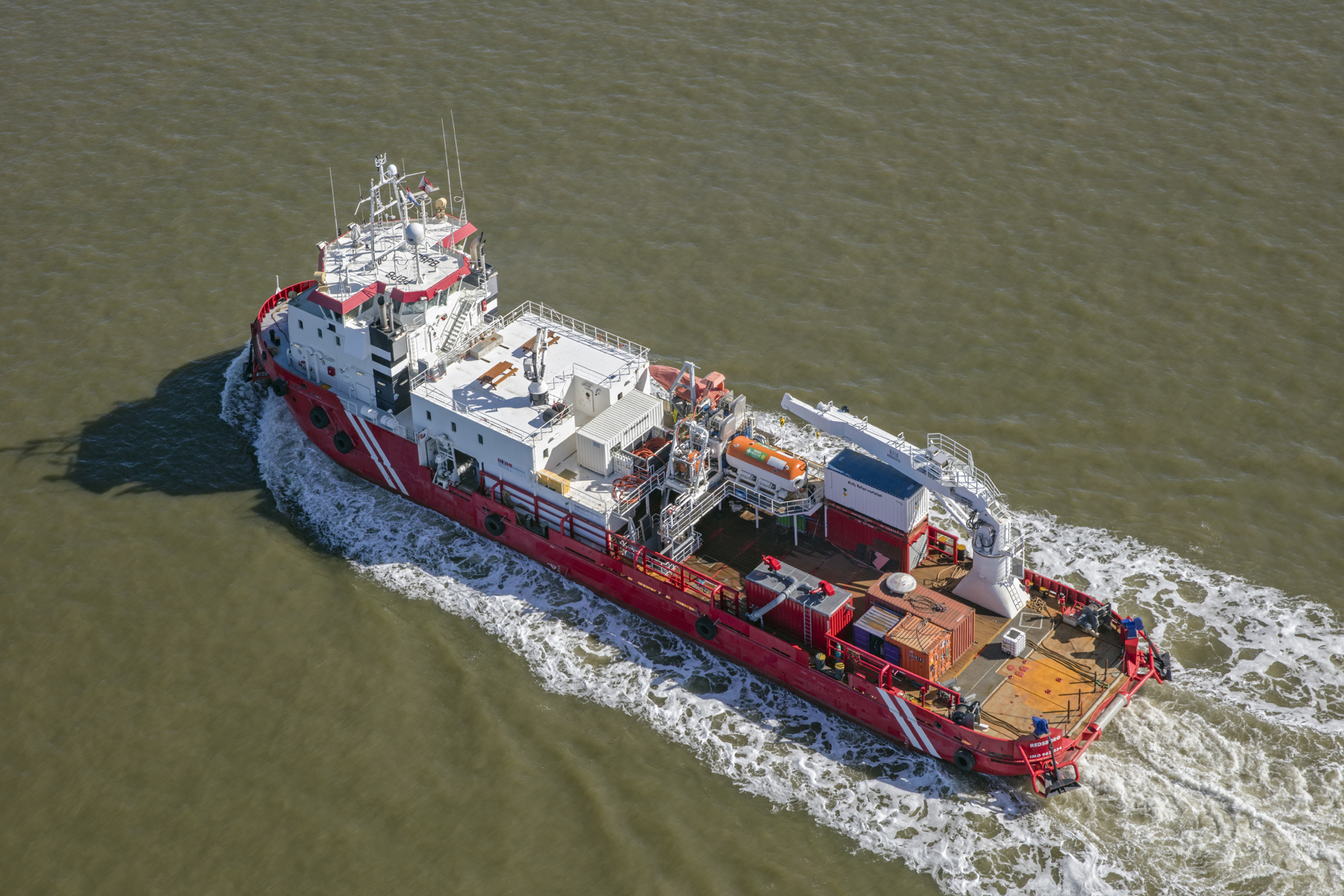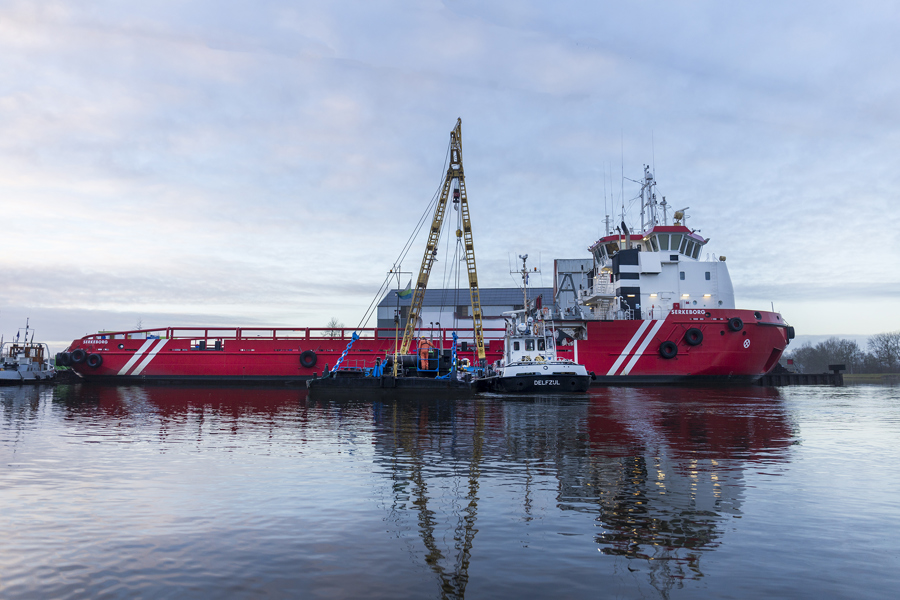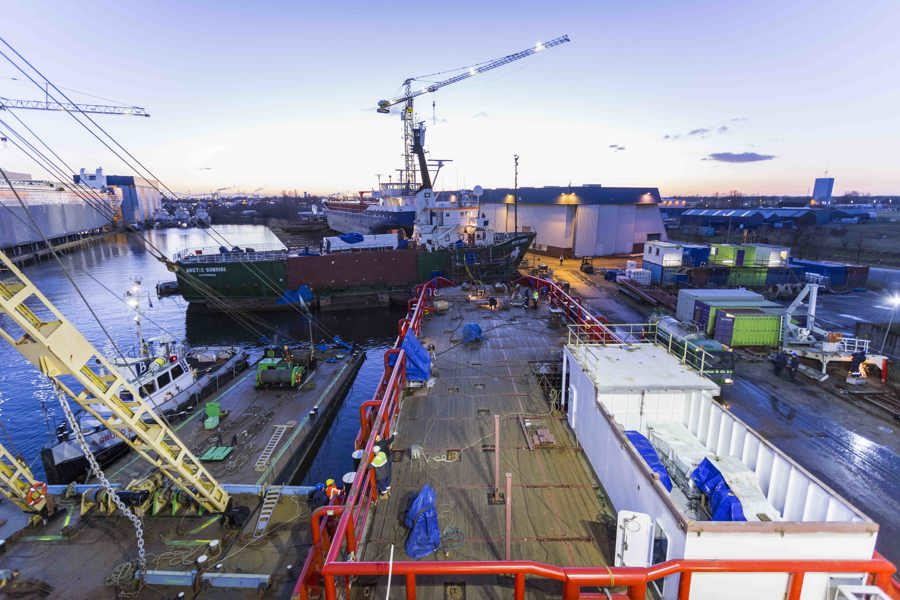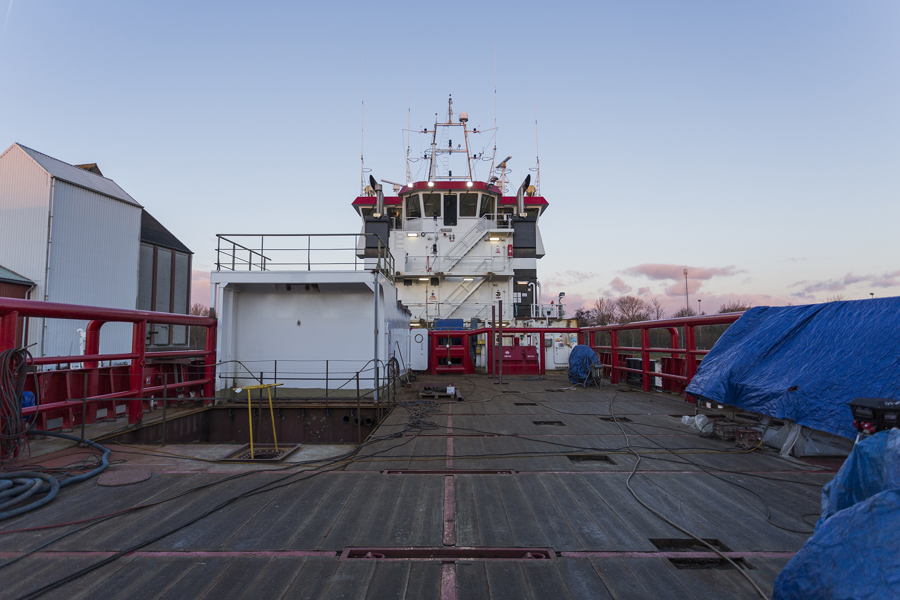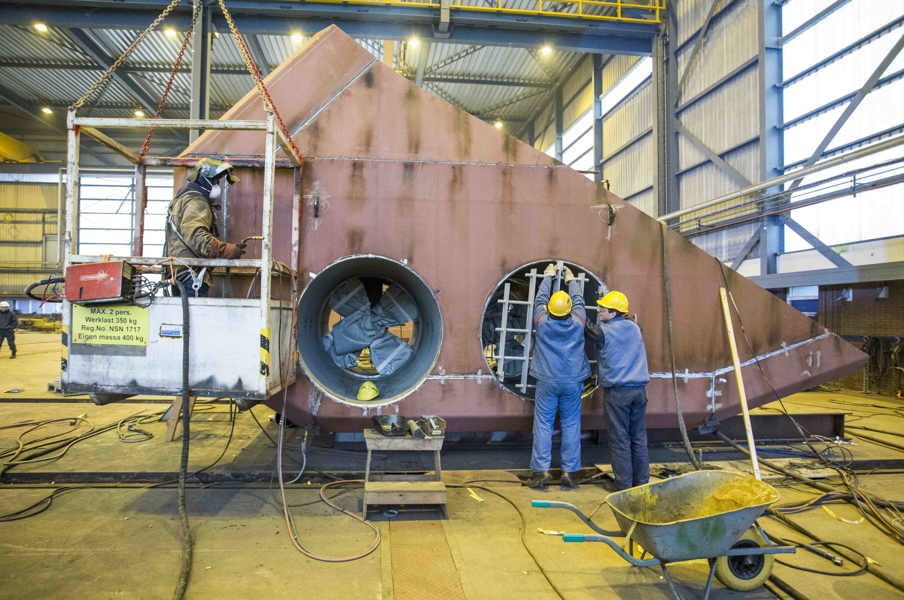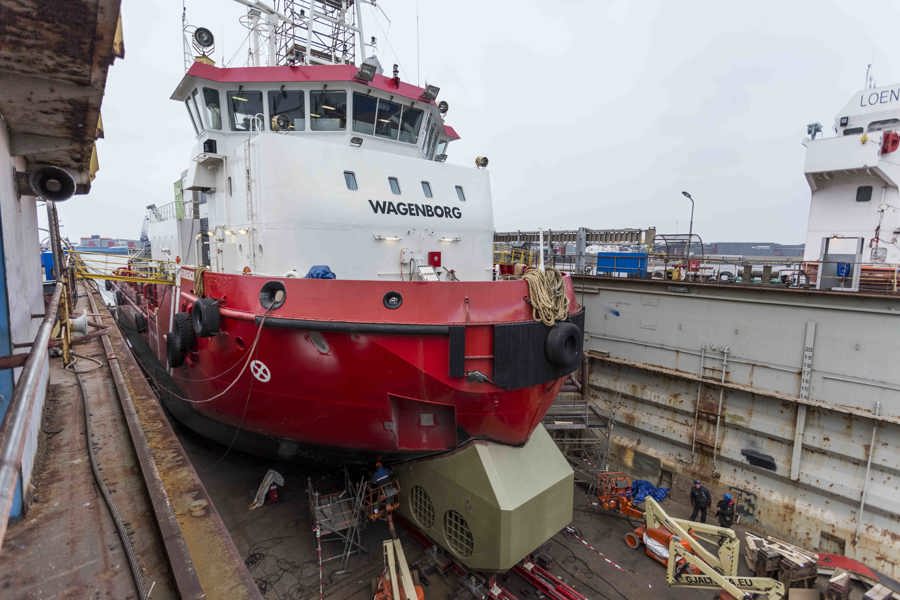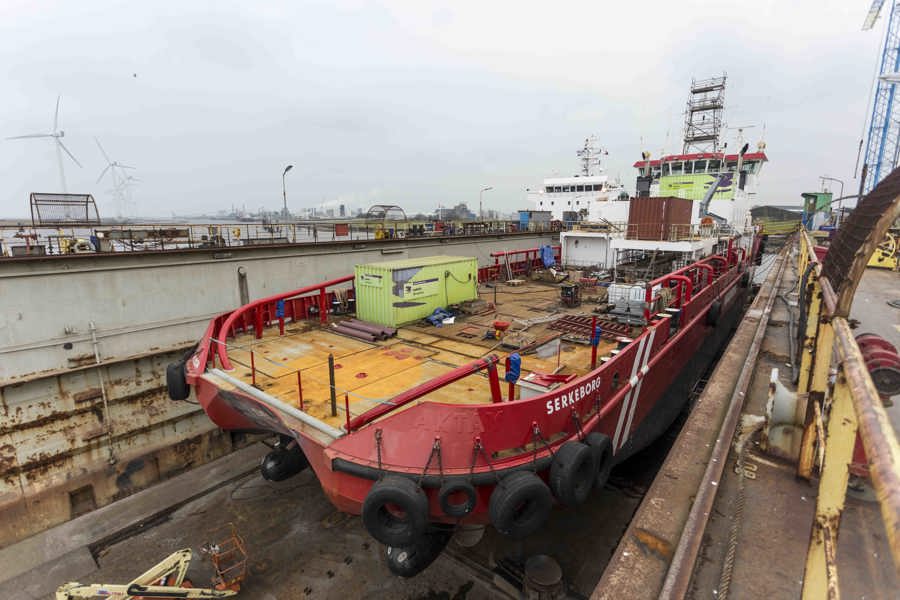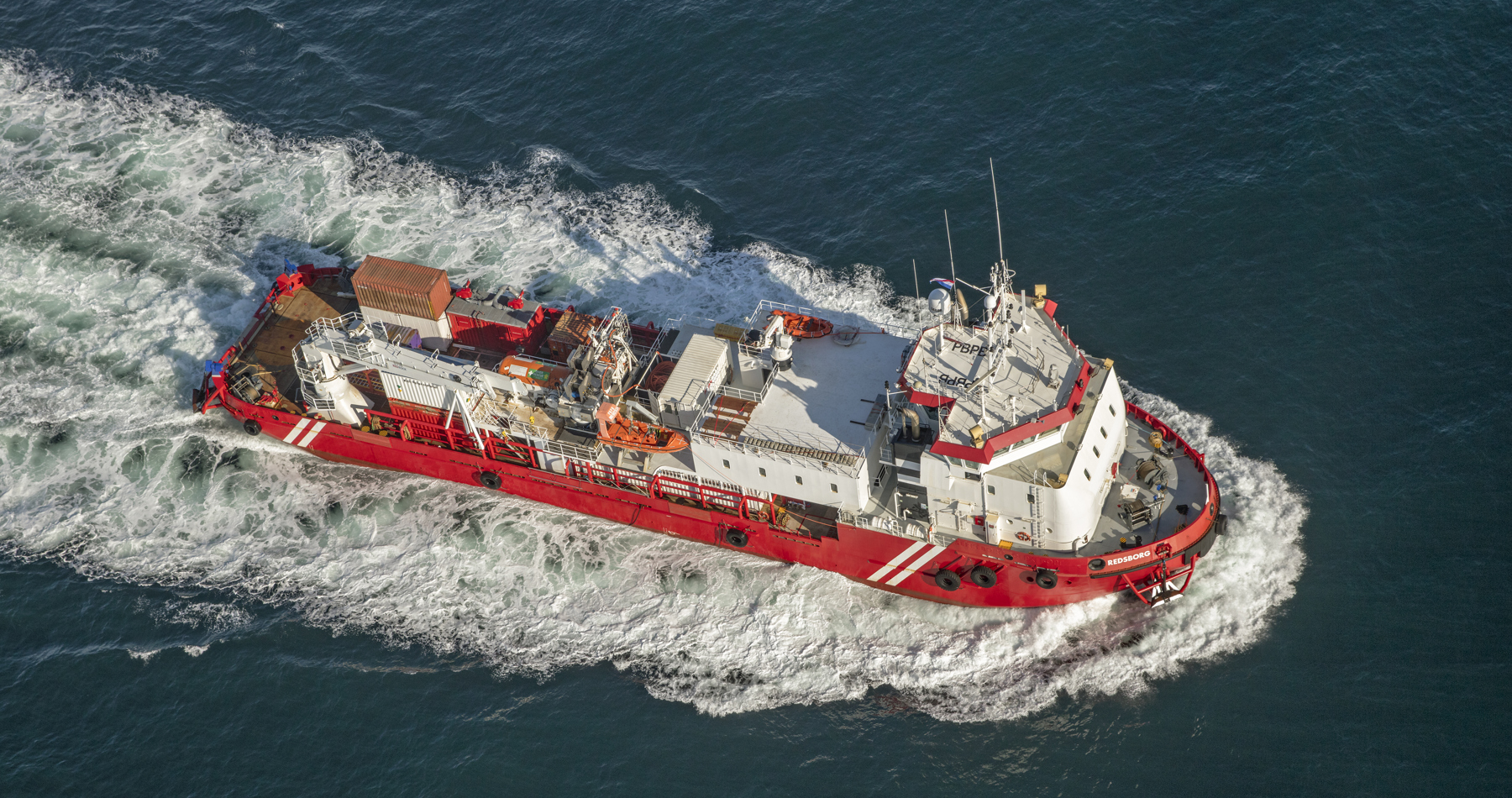
Conversion icebreaker 'SERKEBORG' into diving support vessel
Key figures
22 weeks
2,50 meters draught
12 additional accommodations
2 additional bow thrusters
Back in action
It’s busy as ever at the yard in Farmsum: a floating crane is positioning the accommodation on the aft deck, welders and ironworkers walk back and forth and hundreds of meters of cable are ready to be installed on board. Marc van Dijk is managing the operational part of this conversion. “More than four years ago, this ship was also here, on the opposite side” Marc points across the water. “The new building department built Serkeborg and her sister Sanaborg for Wagenborg Offshore. “These are really special purpose vessels”.
Wagenborg Offshore built both multipurpose offshore support/supply vessels for the shallow Caspian Sea with oil activities in that area in mind. These specially built ice breakers have an extremely low draught of 2,50 metres. The main measurements are 68,20 by 14,30 metres and the accommodation originally offered space for 12 people. Since the oil crisis, resulting in less work, both vessels have never really been deployed in the region they were built for. “Luckily Wagenborg has found a new destination for Serkeborg and because of this she will undergo a substantial metamorphosis” says Marc.
Metamorphosis
In December, Serkeborg came back from Harlingen to the yard in Farmsum to be converted into a diving support vessel. The entire conversion will take approximately 22 weeks. Project manager Marc van Dijk continues: “A large number of cosmetic changes will be visible. An extra accommodation unit will be added, ensuring 24 people can stay on board. Furthermore, a fire fighting unit, a four point mooring system and a heavy crane will be installed on the aft deck."
Decompression chamber and moon pool
Serkeborg will play a large role in subsea maintenance- and diving work. This is the reason why she will be equipped with functionalities to facilitate this. For instance a decompression chamber and a so called moon pool. “A moon pool is an opening in the hull of the ship through which divers can easily exit the vessel and do their work under water. It is of importance that the vessel stays perfectly in position. This is the reason why Serkeborg will be upgraded to a DP2 vessel” Marc van Dijk explains.
DP2 upgrade
For the required ‘dynamic positioning’ capacities the current propulsion system with bow thrusters is not sufficient. This is the reason why two additional bow thrusters are installed. Marc explains: “A special section is built for the bow thrusters. In February the Serkeborg will go to a dock, to enable us to install this special bow section with bow thrusters to the ship. Aided by these two bow thrusters the vessel is equipped with DP2 characteristics. The bridge will be adjusted accordingly."
Due to the tight and structured way of managing this project, the reconstruction of Serkeborg slowly draws to a close. “In the first few weeks of 2017 a lot of work was done by the yard. The accommodation and the moon pool were positioned after which the ship was moved from the inland location to the dry dock in the port of Delfzijl. Apart from the new bow section, also the four point mooring system was installed here” explains Marc.
Renamed Redsborg, this vessel will leave the Netherlands in the middle of April. The entire project is engineered in close cooperation between Wagenborg and the yard Niestern Sander.
